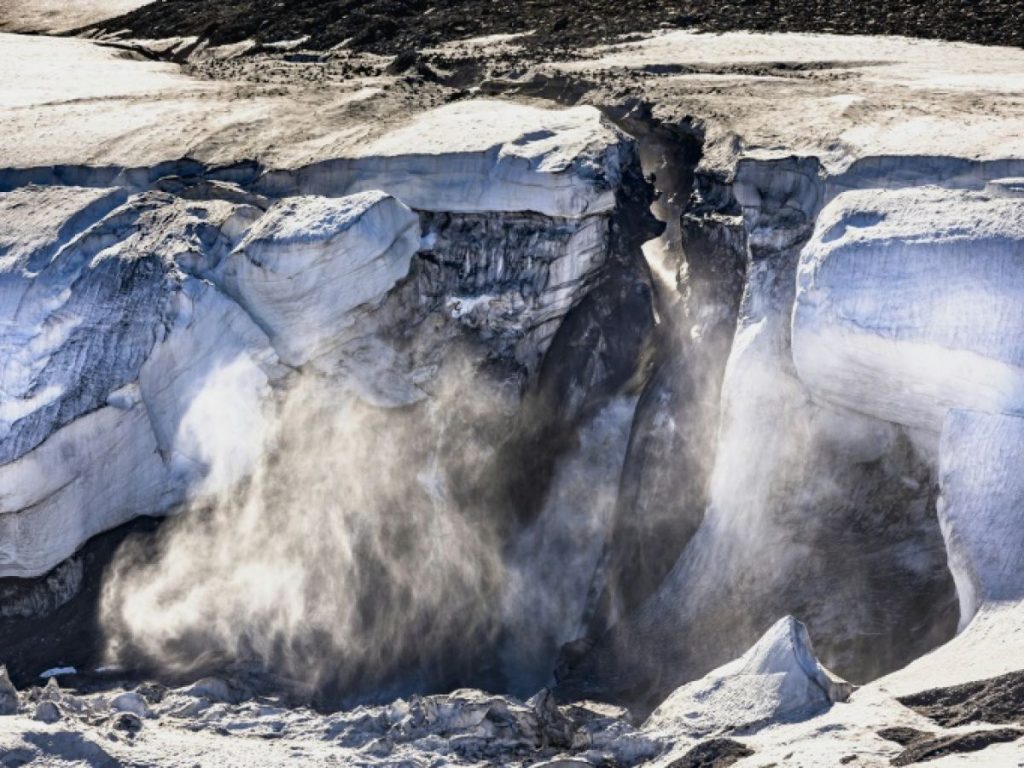
Exceeding 1.5°C of warming could trigger climate tipping points
A study published Thursday in the journal Science shows that global warming above 1.5 degrees Celsius, the most ambitious goal of the Paris Agreement, could lead to several climate “tipping points” that could lead to a catastrophic chain reaction.
Current temperatures, which are already rising, threaten to trigger five of these rupture points, including those over the ice cap in Antarctica and Greenland, warned the study’s authors, who believe it’s not too late to act.
“For me, it will change the face of the world — literally, if you look at it from space,” as ocean levels rise or forests are destroyed, explained to AFP Tim Linton, one of the study’s lead authors.
The first major publication on this topic occurred in 2008.
A “tipping point” is “the critical threshold beyond which a system reorganizes itself, often brutally and/or irreversibly,” as defined by the UN Panel of Climate Experts (IPCC). These are phenomena that independently and inevitably lead to further sequential consequences.
If preliminary analyzes estimate their threshold to be in the range of 3 to 5 °C of warming, advances in observations and climate modeling, as well as in reconstructing past climates, have significantly reduced this assessment.
The study published in Science is a compilation of more than 200 scientific publications, made in order to better predict the thresholds causing these breaking points.
The authors identified nine major “tipping points” at the planetary level and seven at the regional level, 16 in total.
Of these, five could be caused by current temperatures, which have risen nearly 1.2°C on average since the pre-industrial era: those related to the ice caps of Antarctica and Greenland, the sudden thaw in permafrost, and the cessation of the transition phenomenon Heat in the Labrador Sea and the extinction of coral reefs.
As the temperature rises by 1.5 degrees Celsius, four more points move from the “possible” category to the “probable” category, and another five become “possible,” according to the study.
– ‘Social tipping point’ –
For the ice caps of West Antarctica and Greenland, crossing the breaking point estimated by scientists would, over hundreds of years, contribute to a 10-meter sea level rise, details Tim Linton, of Britain’s University of Exeter.
If the destruction of coral reefs has already begun, the rise in temperatures could make this destruction permanent, and thus affect the 500 million people who depend on it.
In the Labrador Sea, the phenomenon of heat exchange (or convection) that brings warm air to Europe can be disrupted, resulting in colder winters, as happened on the continent during the Little Ice Age.
Accelerated thawing of permafrost will release massive amounts of greenhouse gases and dramatically alter landscapes in Russia, Canada and Scandinavia.
With a 1.5°C warming, a major Atlantic oceanic current (AMOC) will be disrupted and at 2°C this will be the case for the West African, Sahel, and Forest monsoons. Then it turns into a savannah.
These devastating effects depend on the duration of the warming, as the study’s lead author, David Armstrong-McKay, explains: If the temperature stabilizes at 1.5 degrees Celsius for 50 or 60 years, the planet will face the worst consequences.
He adds that these “tipping points” will do little to exacerbate the warming itself, believing humanity can still limit future damage. The scientist argues: “It is always beneficial to reduce our emissions as quickly as possible.”
Tim Linton, one of the world’s experts on the subject, wants to believe that this concept of estrangement can translate more favorably into the fight against the climate crisis, as a “social tipping point” that encourages action.
“That’s how I woke up in the morning,” he explains. “Can we change, transform our ways of life? Thinking systematically, with this breaking point idea, gives us a ray of hope.”

“Organizer. Social media geek. General communicator. Bacon scholar. Proud pop culture trailblazer.”
